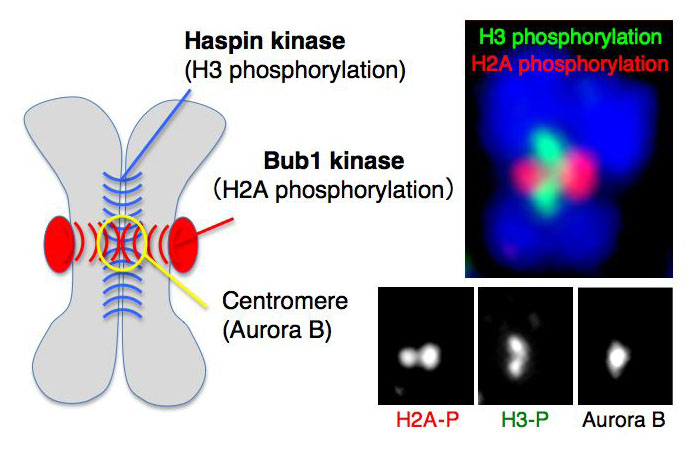Two histone marks establish the inner centromere and chromosome bi-orientation.
For proper partitioning of chromosomes in mitosis, the chromosomal passenger complex (CPC) including Aurora B and Survivin must be localized at the center of paired kinetochores, the site called the inner centromere. It is largely unknown what defines the inner centromere and how the CPC is targeted to this site. Here, we show that the phosphorylation of histone H3 threonine 3 (H3-pT3) mediated by Haspin cooperates with Bub1-mediated H2A-S121 phosphorylation in targeting the CPC to the inner centromere in fission yeast and human cells. H3-pT3 promotes nucleosome binding of Survivin, while H2A-pS121 facilitates the binding of shugoshin, the centromeric CPC adaptor. Haspin colocalizes with cohesin by associating with Pds5, while Bub1 localizes at kinetochores. Thus, the inner centromere is defined by spatial intersection of two histone marks mediated by cohesin- and kinetochore-associated kinases (Figure).
Program member
Yoshinori Watanabe (Institute of Molecular and Cellular Biosciences)

Figure
